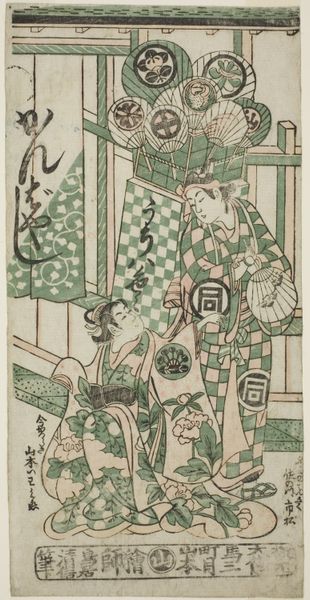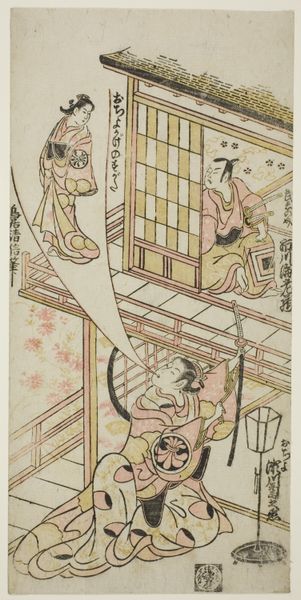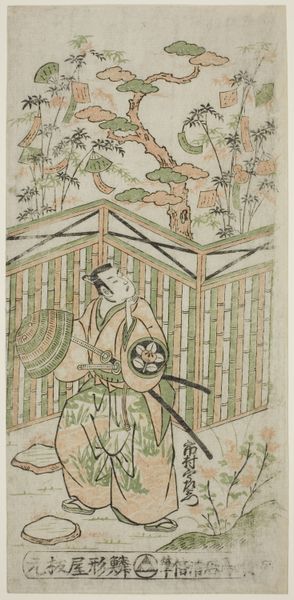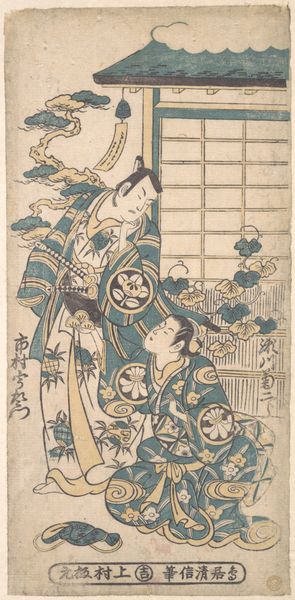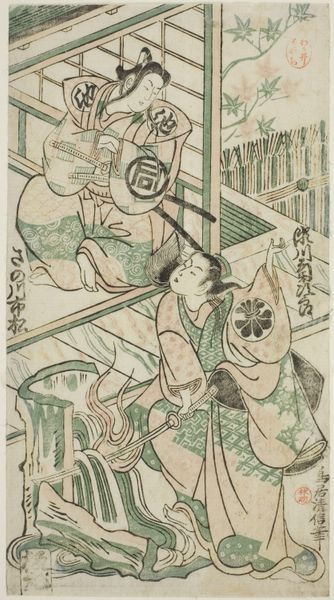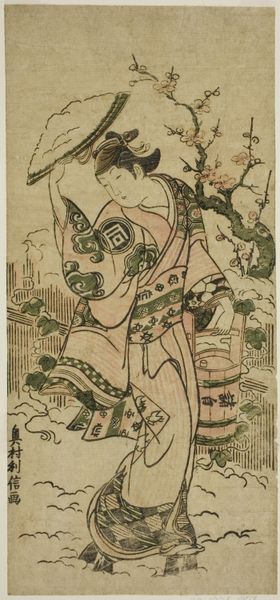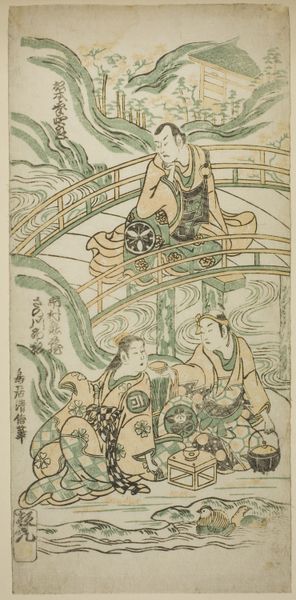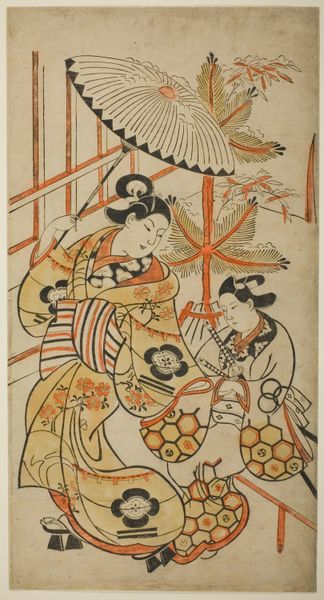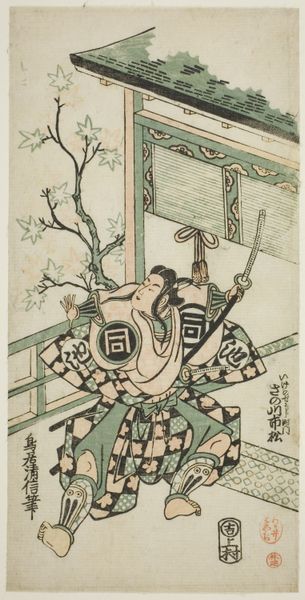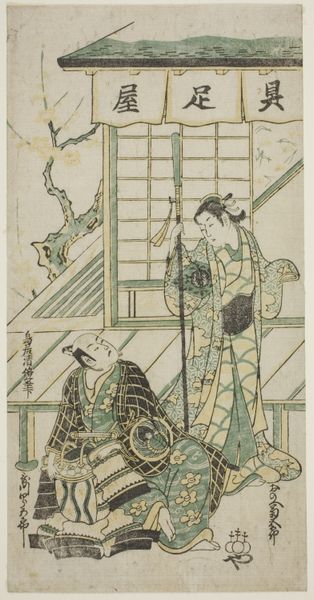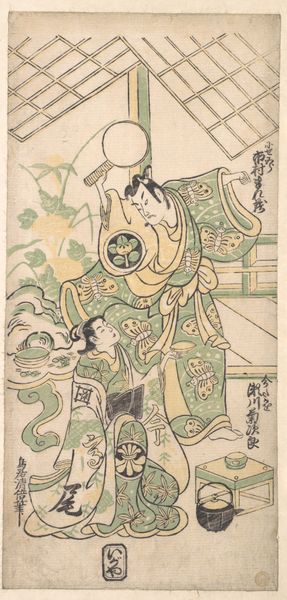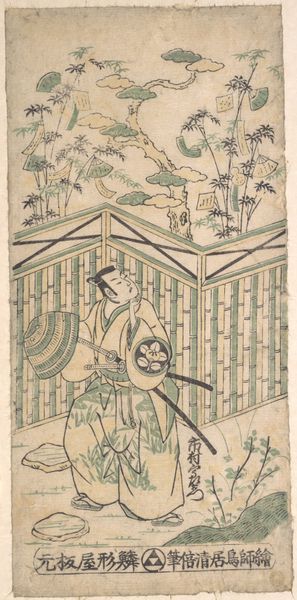
The Actors Segawa Kikujiro I as Nobutsura's wife Karumo and Otani Oniji I as Tahara Matataro in the play "Shusse Momijigari," performed at the Ichimura Theater in the eleventh month, 1747 1747
0:00
0:00
print, woodblock-print
#
narrative-art
# print
#
asian-art
#
ukiyo-e
#
figuration
#
woodblock-print
Dimensions: 12 × 5 3/4 in.
Copyright: Public Domain
Editor: We're looking at "The Actors Segawa Kikujiro I as Nobutsura's wife Karumo and Otani Oniji I as Tahara Matataro in the play "Shusse Momijigari," made in 1747 by Torii Kiyonobu II. It's a woodblock print at the Art Institute of Chicago. I'm struck by the bold outlines and the contrasting colors. How would you interpret the composition? Curator: Notice first the flatness of the picture plane, a defining characteristic of *ukiyo-e*. The arrangement is decidedly graphic. Kiyonobu employs strong, curvilinear lines to define form. The dynamism comes not from chiaroscuro modeling, but from the expressive contours and the patterned surfaces of the kimonos. Note the controlled palette; green and muted earth tones are offset by the actors' bare flesh, unifying the diverse elements. Editor: It's interesting you point that out, I noticed how the color choices gave off an understated sense of depth despite the piece being so obviously flat. What else catches your eye? Curator: I am intrigued by the architectural framing – the clean lines of the building set against the organic form of the maple tree, hinting at both constraint and freedom. Ask yourself what effect this contrast has. Also, consider the positioning of the figures in relation to one another and to the viewer; what is implied in the visual construction of the print? Editor: So, the composition itself, the formal arrangement of shapes and lines, becomes the language through which we understand the narrative and cultural meaning of the print? Curator: Precisely. The artist creates meaning by carefully manipulating the visual elements, independent of historical or social context. We can read it as a visual problem elegantly resolved through balance and counterpoint. Editor: I'm starting to appreciate how much information is conveyed just through the structure and forms in the work. Curator: Yes. Reducing our reliance on the external helps refine how we appreciate the work.
Comments
No comments
Be the first to comment and join the conversation on the ultimate creative platform.
